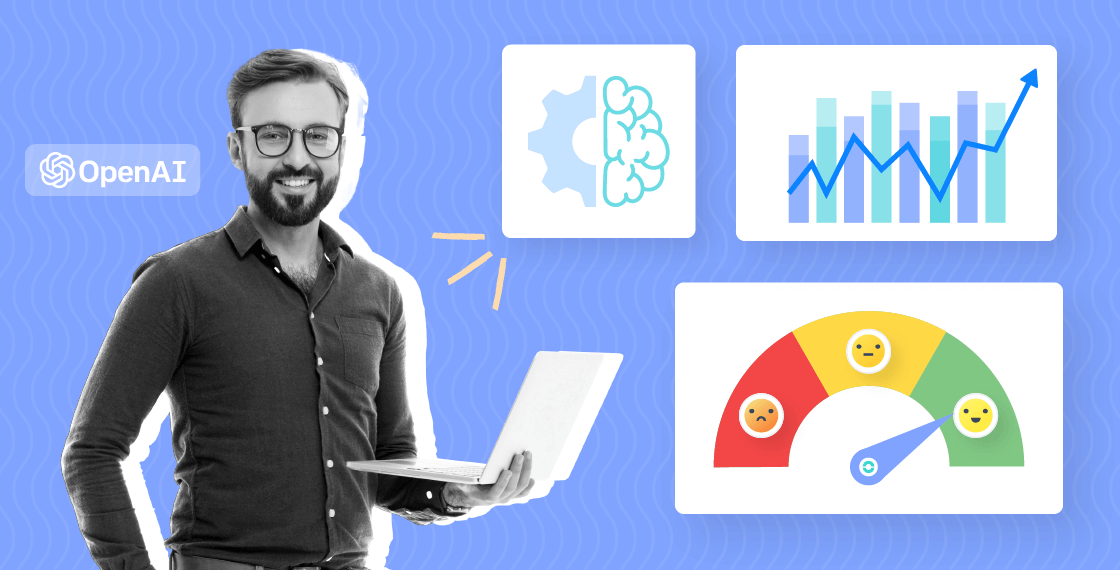Summary
- What is sentiment analysis?
- Our ranking for the best sentiment analysis tools
- How does sentiment analysis work?
- What are the three types of sentiment analysis?
- Uses of sentiment analysis
- What is the purpose of sentiment analysis?
- What is a sentiment analysis tool?
- The benefits of sentiment analysis tools
- What are the challenges of sentiment analysis?
- Conclusion
- Sentiment Analysis FAQ
What is sentiment analysis?
Sentiment analysis is a technique that automatically breaks down the meaning of text and extracts information. Sentiment analysis then classifies that data as positive, negative, or neutral.
Sentiment analysis and more specifically, sentiment analysis tools, are highly useful for professional applications because they can interpret and monitor emotions–the “sentiment” or feeling being expressed by a person.
Sentiment analysis tools found popularity among businesses because they can process bulk amounts of text data efficiently and yield impactful insights.
Our ranking for the best sentiment analysis tools
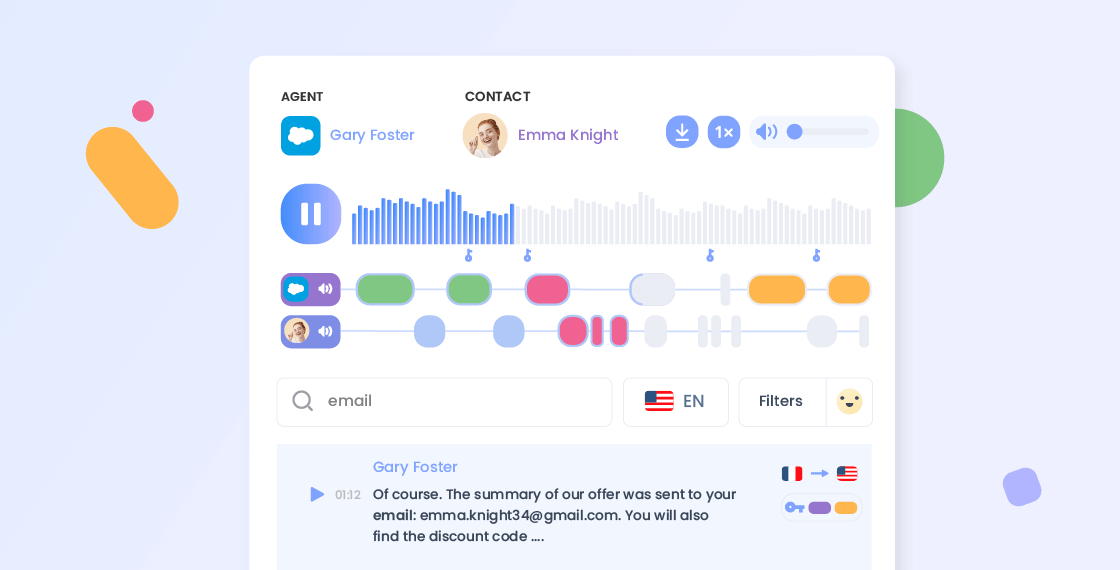
1. Empower by Ringover
Empower by Ringover is a sentiment analysis tool that eases training, improves overall performance, and saves time. Once integrated with your business phone, Empower by Ringover automatically transcribes calls, identifies what topics have been discussed, and provides a sentiment analysis for customer insight. Plus, the tool then provides personalized advice for agents based on KPIs like speed of speech, interruptions, and more).
To access these powerful insights into your customer base, subscribe to Empower by Ringover for $69 per month.
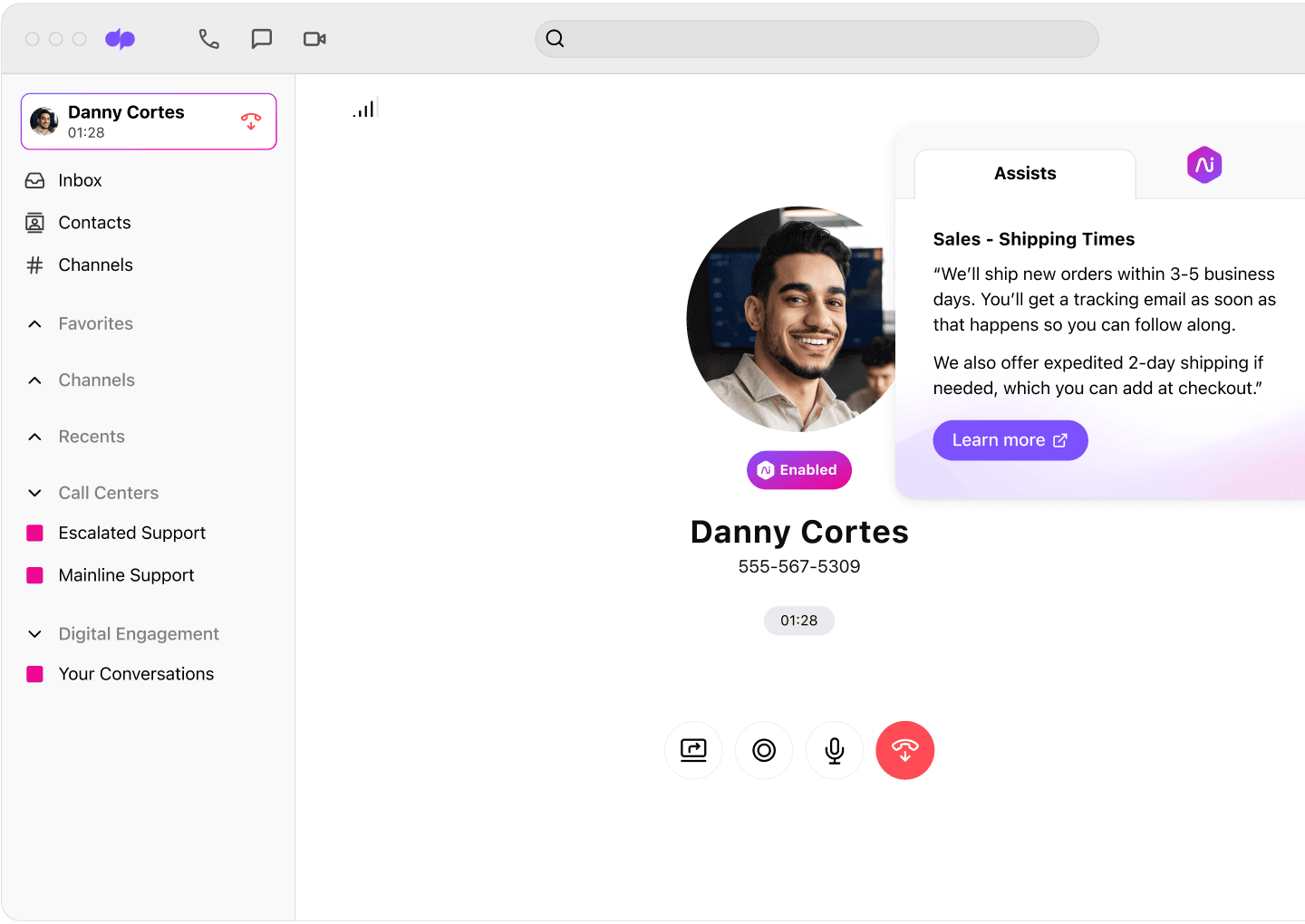
2. Dialpad
If you subscribe to Dialpad’s products AI Sales or AI Contact Center, you’ll have access to their sentiment analysis feature. The Sentiment analysis is primarily to help coach new representatives. The software tracks positive and negative moments during interactions, as well as other coachable moments.
Because this functionality is folded into other plans with numerous other features, the pricing no doubt reflects the superfluous functionalities that come with sentiment analysis. But to find out, you’ll need to contact their sales team–all prices are on request only.
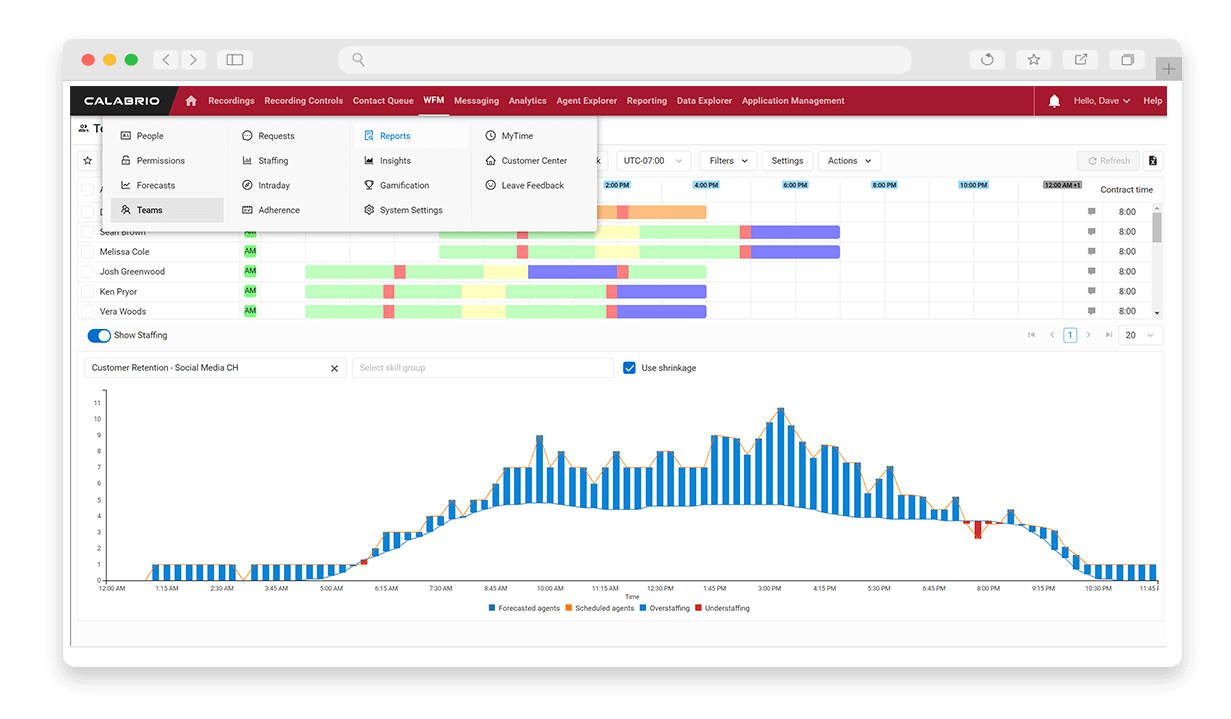
3. Calabrio
This company focuses on customer support, so their products may not necessarily support sales teams. With that being said, they have folded AI-based sentiment analysis into their product Calabrio ONE, which is a workforce performance suite idea for enterprise-sized businesses.
As such, Calabrio ONE’s abilities goe far beyond just sentiment analysis to support client support representatives. Billed as software meant to help optimize and organize workflows, the Calabrio ONE product is definitely an enterprise product. In fact, Calabrio does not even provide pricing for Calabrio ONE on their website. Businesses who are smaller should consider a lighter (and more affordable!) sentiment analysis tool like Empower by Ringover.
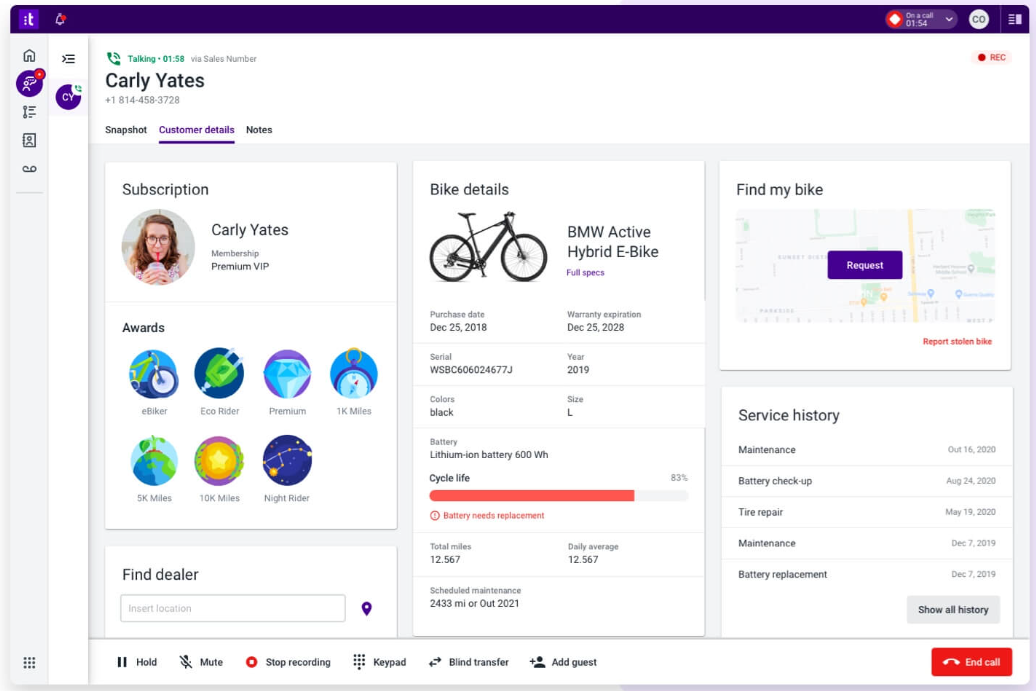
4. Talkdesk
Talkdesk is another contact center solution that folds their sentiment analysis feature into one of their top tier plans. So while you’ll get the sentiment analysis to help you decode conversations, you’ll have to reserve a significant monthly budget.
In fact, to access Talkdesk’s sentiment analysis functionality, you’ll need to subscribe to their CX Cloud Elite plan at $125 per user/month. This plan provides a contact center software with auto attendant, integrations, omnichannel communications, and more. So though you may get the feature you needed, there are less comprehensive plans that still provide the desired features.
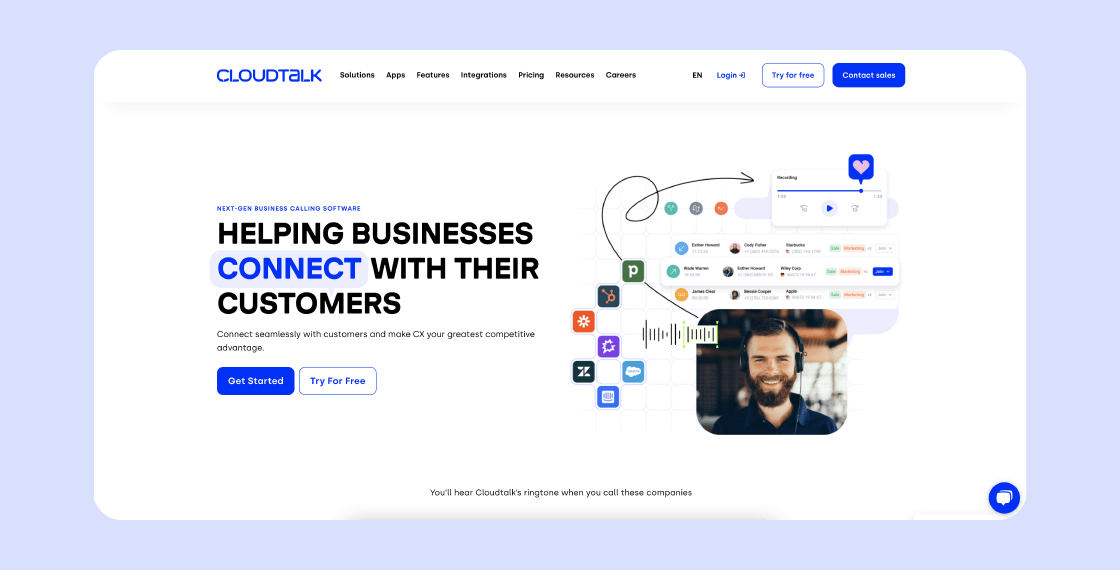
5. CloudTalk
CloudTalk has only recently debuted their conversational intelligence tools, which is similar to Ringover’s in that it automates call transcriptions and eases decision-making for agents. With sentiment analysis supporting representatives, it’s much easier to know when customers or prospects had a strong emotional reaction. With that information, your teams can then adjust their approach as necessary.
Because this appears to be a relatively new product from CloudTalk, there is little pricing information on their website. The sentiment analysis doesn’t appear as a feature included with any of their current plans, so you’ll have to get in touch with their sales team to know what budget is necessary.
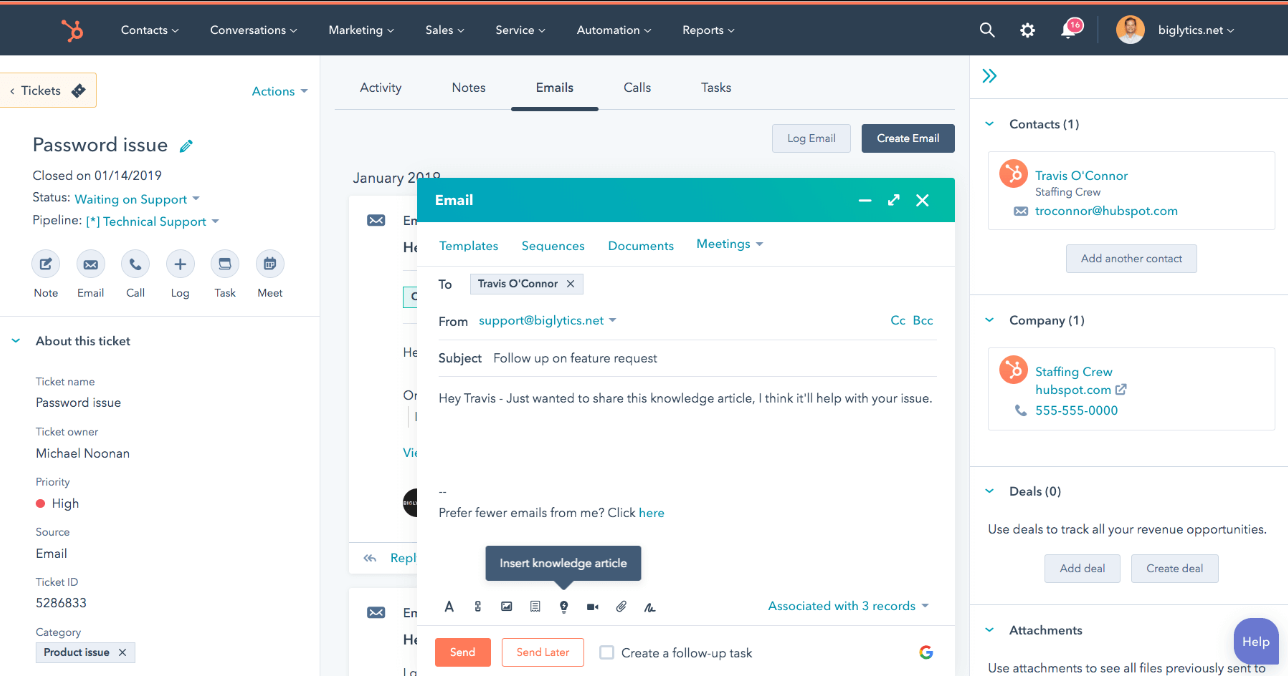
6. HubSpot Service Hub
While this tool does complete sentiment analysis, it differs significantly from Empower by Ringover. While Empower eliminates tiresome manual transcription, HubSpot’s version focuses more on written feedback.
If you run surveys past clients, this software will analyze survey responses and evaluate the emotions expressed. This data will then be available to your teams, so agents can look into overall performance or even specific clients. To gain access to this tool, you will need to subscribe to the HubSpot Service Hub, which includes a large amount of features and appears to start at $45 per month.
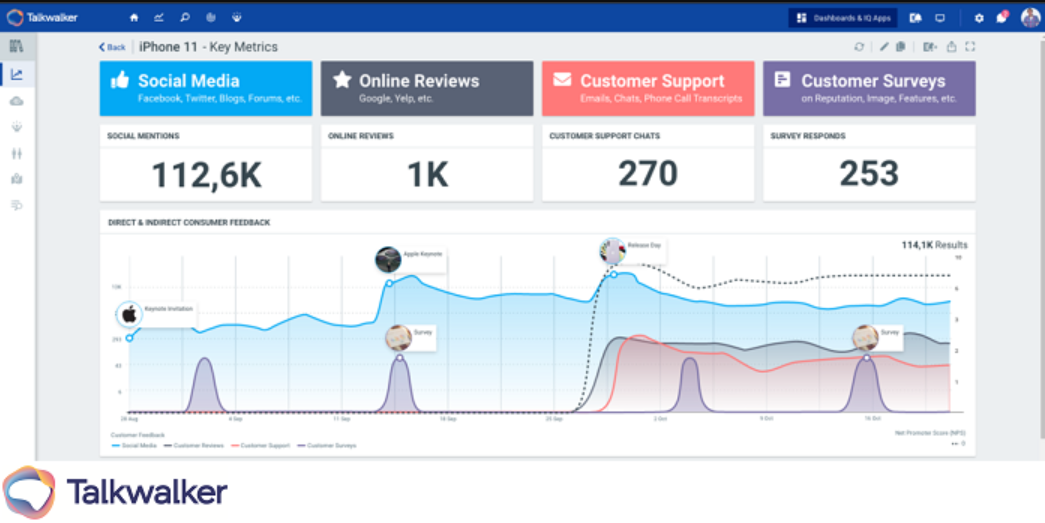
7. Talkwalker
For those who have a big presence on social media or in the press, Talkwalker has developed a thorough way to analyze emotion in the written form. Once you have activated your plan, Talkwalker will gather the opinions and feedback expressed online via social listening and media monitoring.
Talkwalker will definitely help you keep a handle on what people are saying about your brand online. However, you’ll definitely pay for the privilege. Talkwalker doesn’t list pricing on its official website, but sources online indicate the subscription plans begin at $9,000 per year.
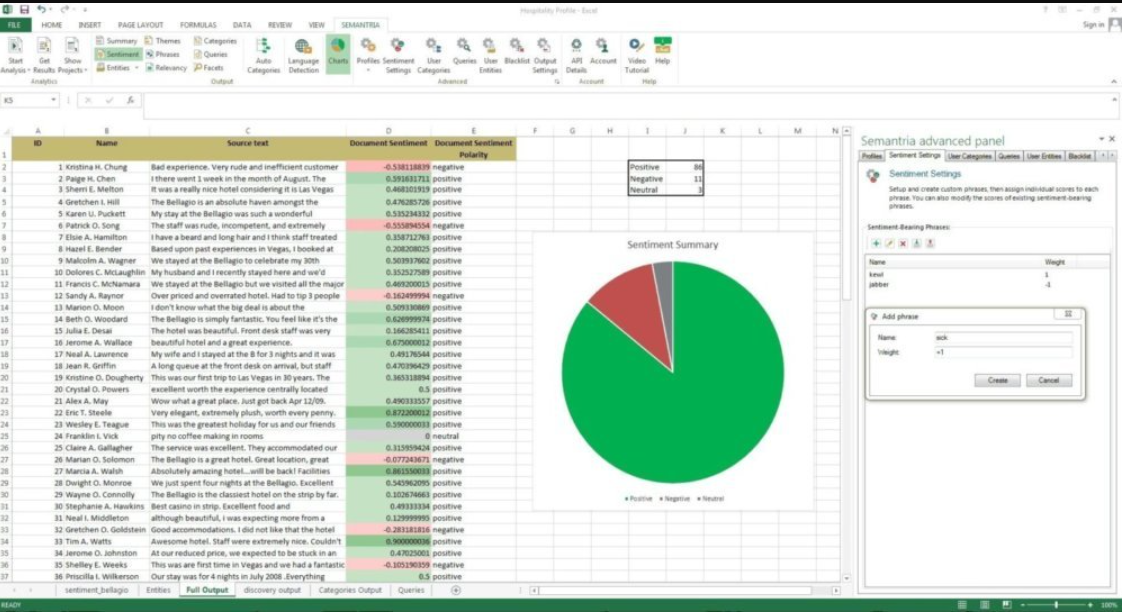
8. Lexalytics
Similar to Talkwalker, Lexalytics is only able to process text-based data–a downside if your main goal is to get an objective view of customer calls. To use it to gain insight into your contact center’s performance, you’ll need to first transcribe the interactions.
Lexalytics really shines if you want to focus on social listening or keeping an eye on how your brand is discussed in the press. They help you to understand the feelings expressed, as well as provide a summarized report that looks into why those opinions were expressed. One thing that will remain unknown is the price–at least until you contact their sales team. Lexalytics is price upon request only.
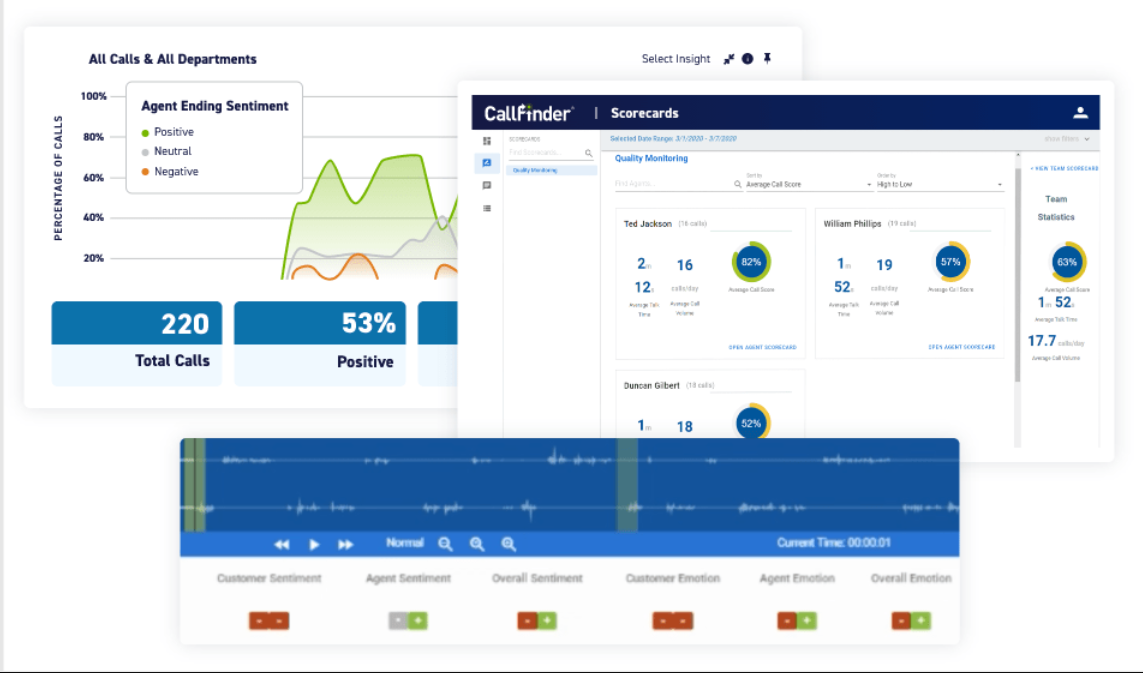
9. Callfinder
Callfinder developed a speech analytics software which is meant to improve the quality of service provided by your customer service representatives. The software will provide each agent with personal analytics so they can understand their performance. In addition to creating a scorecard for your team members, the solution also provides a basic sentiment analysis.
Unfortunately, no information is available online regarding pricing, as Callfinder’s plan prices are only price upon request.
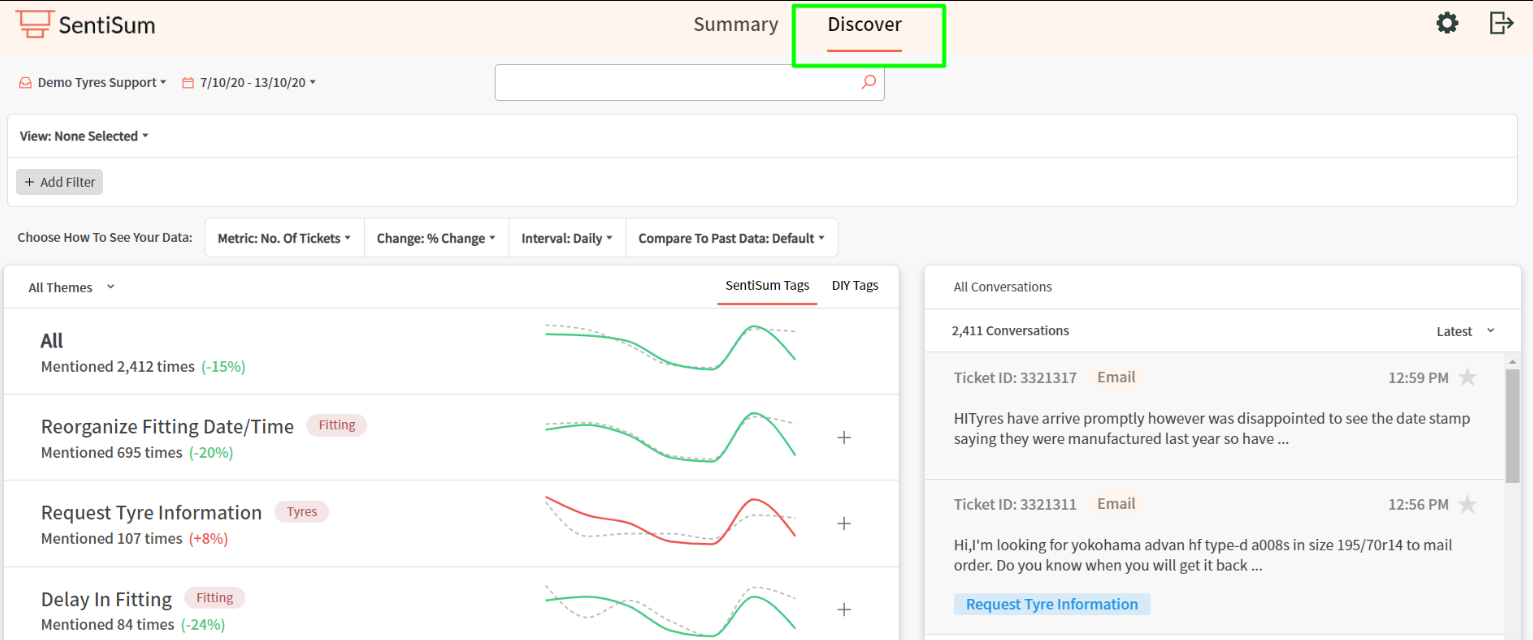
10. Sentisum
Sentisum is an AI-based software which integrates with support platforms. As such, it’s unique on this list because it’s not a standalone software. The idea is that it will use AI to perform sentiment analysis on feedback, resulting in learnings you can easily share. Sentisum accomplishes this by extensive tagging of customer feedback across all channels.
When it comes to price, this comprehensive solution is definitely a commitment, as it rings in at $1000 per month. No word on if you are charged per user.
11. Zonka Feedback
Zonka Feedback focuses on written and survey-based sentiment analysis, making it ideal for teams that want to understand customer emotion at scale. The AI engine doesn’t just calculate NPS or CSAT scores, it dives into open-ended responses to reveal tone, urgency, and recurring themes. Unlike many sentiment analysis tools folded into massive CX platforms, Zonka Feedback keeps things accessible, especially for mid-market teams.
To access these insights, you’ll need to subscribe to one of their paid plans. This sentiment analysis tool offers transparent pricing with plans starting at $49/month—no surprise costs or enterprise-only pricing tiers.
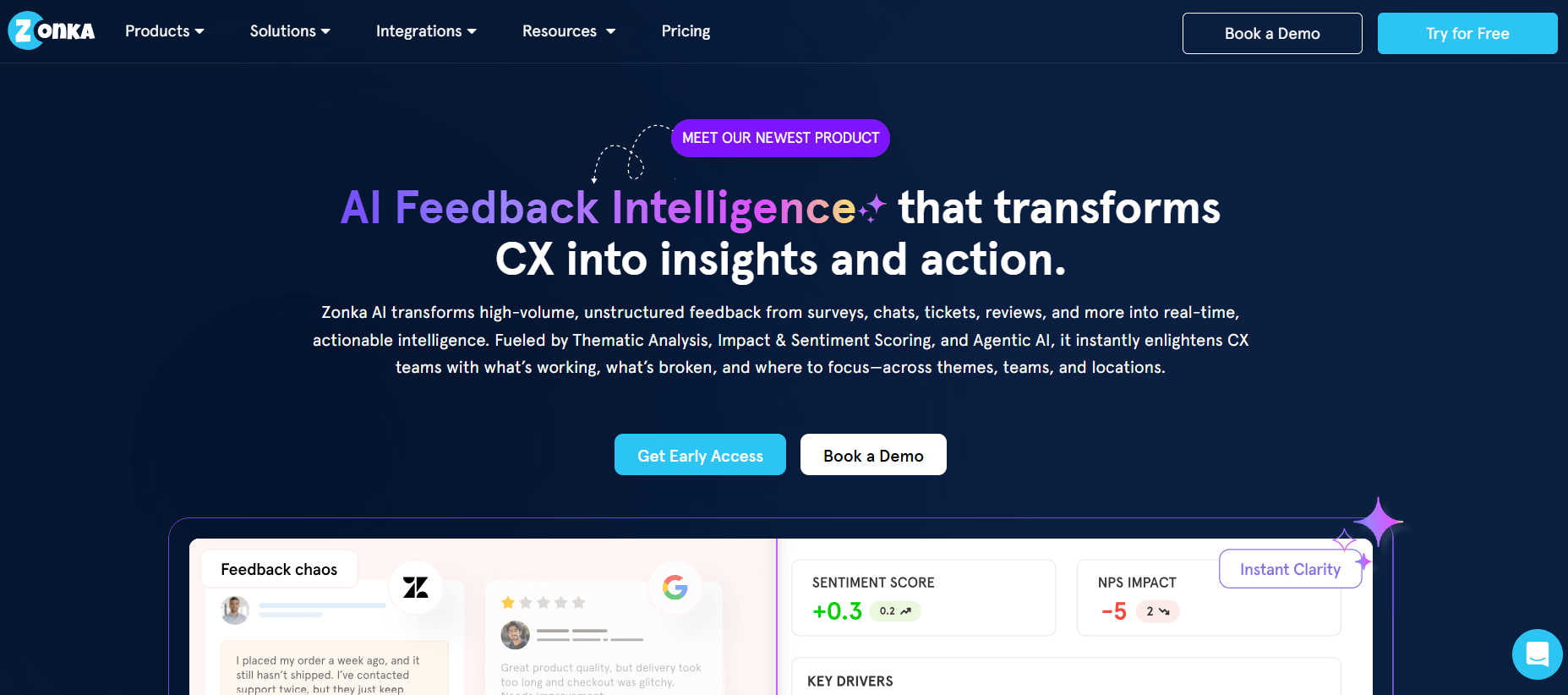
How does sentiment analysis work?
Sentiment analysis is possible thanks to natural language processing (NLP), a branch of artificial intelligence (AI) that enables machines to understand human language. NLP is used for several purposes, which can include translation, spell check, topic classification, and most relevant to businesses, sentiment analysis. Sentiment analysis is closely related to conversational intelligence.
As with any AI technology, there are several algorithms that can power sentiment analysis. The three most commonly used are rules-based, automatic, and hybrid.
Rules-based sentiment analysis
Rules based sentiment analysis analyzes text based on manually set, predefined rules. For example, you'll assign lists of words to different sentiments, with each word receiving a sentiment score depending on its polarity. In this context, polarity refers to the strength of the sentiment the word expresses.
Negative words would include “bad,” “terrible,” or “poor,” and positive words would include “love,” “great,” or “good.” The algorithm will count the emotion-expressive words and then place those sentiments into the predefined categories (normally, those categories are positive, negative, and neutral).
While rules-based algorithms are relatively simple (to understand and deploy), they can overlook the complexities inherent in client or prospect conversations.
Automatic sentiment analysis
Automatic sentiment analysis relies on machine learning techniques to tag text with the different sentiments expressed. To successfully apply automatic sentiment analysis, you would have to deploy a machine learning model so the algorithm knows how to classify words according to your needs. With a proper implementation, the precision and accuracy of sentiment analysis can be very high with the automatic technique.
Hybrid sentiment analysis
Hybrid sentiment analysis combines both rules-based and automatic techniques. By taking the best of both worlds, you can generally get the best results. You'll get a good level of accuracy from the automatic sentiment analysis, and stability from the rules-based approach.
What are the three types of sentiment analysis?
We have already discussed the most common categories into which sentiment analysis is usually divided: positive, negative and neutral. However, there are other possible groups of categories, each one specific to the type of need your business or company has. Here are the different types of specialized groups within sentiment analysis:
Fine-grained
This is a type of analysis based on the polarity discussed above, and is one of the most commonly used ways of analyzing text samples. Generally, the sentiment will be scored on a five-point spectrum that ranges from very negative to very positive, with neutral in the middle.This is a straightforward method of analysis that is easy to understand, which is one of the reasons why it's also the most widely used analysis method.
Emotion detection
This is a more specialized classification, as it focuses on deciphering the emotion conveyed by a message. The most common emotions (and therefore, most commonly used to categorize) are: joy, sadness, hate, frustration, and happiness. Emotion-based categorization is very common in product launches to find out how close this new product or service is to the expectations of new customers.
Understanding what emotions are being expressed in a text is a tall order, even for humans. That's why this type of sentiment analysis is most accurate when powered by a machine learning algorithm.
Aspect-based
When it comes to aspect-based sentiment analysis, the goal is to identify specific attributes or topics. For example; if you are analyzing product reviews, aspect-based sentiment analysis will identify what ideas or attributes are being discussed in the reviews.
In other words, this type of analysis parses out what aspects of the products are being discussed, and whether the tone of that discussion is positive or negative. Consequently, aspect-based analysis is considered one of the most valuable types of sentiment analysis. It can surface actionable insights that can inform strategy.
Intent-based
As its name suggests, this type of categorization focuses on the intention of customers or prospects. This type of analysis focuses on determining what intent for action is expressed in the texts analyzed. If you're trying to understand how a marketing campaign pushes customers to action, this type of analysis could be highly useful.
Uses of sentiment analysis
The need for sentiment analysis has become more and more prevalent as businesses start to use non-traditional methods to communicate with their customers and prospects. Businesses formerly used telephone or in-person conversation as primary communication channels, But now there are numerous text-based communication tools. These can include social media messaging, live chat, e-mail, text messages–but businesses can even transcribe audio or video files into text.
As more communication channels opened up, businesses have a more and more pressing need for tools to filter these communications and analyze them in bulk. Just having large quantities of data is only so useful–technqiues like sentiment analysis help to process that data so it can meaningfully contribute to strategy and, ultimately, performance optimization.
That's where sentiment analysis comes in. Deploying a sentiment analysis tool can analyze any text to evaluate the tone, intent, and emotion being expressed. With the data harvested from these exchanges, you'll extract more value from your customer exchanges. Here are the most impactful uses of sentiment analysis.
Improve customer service
Sentiment analysis is an excellent tool if you want to streamline your customer service pipeline and generally improve the customer experience. This is key for a growing business, as a great customer experience is essential for building customer retention.
There are a couple of different ways you can use sentiment analysis to improve customer service. You can filter for strong emotions to surface customer requests that need urgent treatment. Alternatively, you can use sentiment analysis to filter for certain topics so the customer service request gets directed to the most appropriate person.
To close the loop, sentiment analysis lets you verify your customer support team has followed appropriate protocol and brand tone guidance in their interactions.
Improve sales performance
With sentiment analysis, sales representatives can receive important insight into their pitch quality to identify key areas for improvement. For example, sentiment analysis can identify the topics discussed during a customer interaction, so the sales agent knows if they have spent time discussing irrelevant subjects.
Plus, sentiment analysis can determine the polarity of the customer's words and how it evolved over the conversation. With this information, the salesperson can pinpoint when the speaker's tone changed and what they may have said to cause that change. This is valuable information to have so the salesperson can either lean into phrasing that works well or try a different pitch the next time. This will lead to immediate and long-term improvements in sales performance.
Monitor brand perception
When it comes to understanding your brand perception, it is a monumental task to sift through all the data online to arrive at a thoroughly global understanding. Relevant data can come from so many sources (reviews, news sources, blogs, forums, etc.) that having an automated tool like sentiment analysis is key for accurate readings.
Luckily, sentiment analysis makes it possible to analyze large amounts of data harvested from online forums, review sites, and even transcripts from audio and visual files. You'll be able to search for words which express similar emotions or sentiments toward your brand.
You can even bring more complex models into play and track how brand perception has evolved over time. This can help you pinpoint if a certain marketing action or product release has had a significant impact.
Market research
When you're trying to understand the state of a market, sentiment analysis is a great way to distill large amounts of textual data into coherent, actionable information. You'll be able to determine what kind of reputation and brand perception competitors have, thus getting an edge on the competition or even anticipate upcoming trends. By looking at the content of industry reports or industry journals, you'll spot how the market has evolved over time and prepare for future macro changes.
Once you understand what works and how other brands in the same space are positioned, you'll have more insight into how to best position your brand.
Optimize marketing
Sentiment analysis provides several ways to improve your marketing. With sentiment analysis, you can analyze user-generated content like posts and comments to understand where your community is strongest. Sentiment analysis enables you to discover what channels generate the most positive or impactful feedback for your brand, or the nature of a response to a new campaign. On the other hand, in the event of a crisis or poor feedback, sentiment analysis helps you pinpoint the biggest sticking points for customers.
Product development
The holy grail for product development is to create an intuitive and effective product. To achieve this lofty goal, understanding the reactions to other products on the market and the related feelings and opinions of customers is imperative.
Leveraging sentiment analysis enables product developers to identify flaws with other products, or spot needs that have not been served by competitors. For example, if sentiment analysis reveals competitors lack an easy user experience, clearly it would be worthwhile to invest in elegant design when developing a new product.
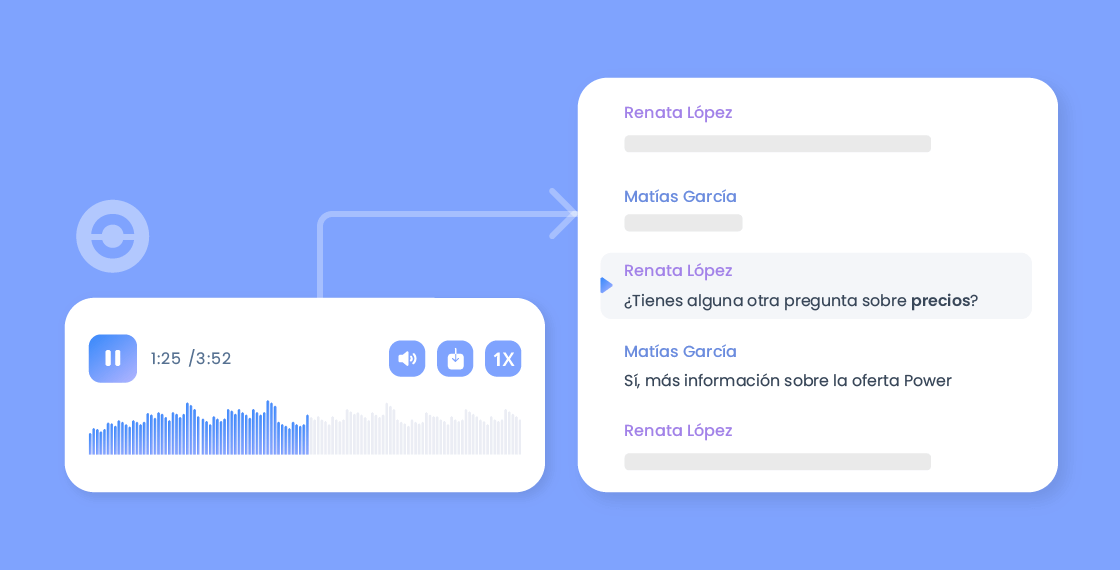
What is the purpose of sentiment analysis?
The purpose of monitoring sentiment analysis is to obtain more information about the future consumer and, eventually, predict future behaviors. By being able to distinguish the feelings behind the phrases shared by the speaker, we can evaluate and classify the emotion of our customers or prospects. This is crucial for a business as it helps to detect the strengths and weaknesses of both your product or service and, sometimes, the way your agents communicate.
How do your sales agents feel when they try to sell, how do your leads feel when they hear about your brand, how do they feel about your support service, and how do they feel when they hear about your brand? This information is extremely valuable for the future of everything involved in your business processes. You could adapt the communications made from your omnichannel call center or the way your customer service team operates to change customer sentiment. Still sounds like a futuristic event far away, doesn't it? Well, with Ringover's new sentiment analysis tool Empower, this is now possible.
What is a sentiment analysis tool?
Sentiment analysis tools are software that evaluate large quantities of text to determine the tone, intent, and emotion expressed by messages. The tool will then surface actionable insights. These types of tools are particularly useful for sales and customer service teams who have large numbers of customer interactions with prospects and customers.
The benefits of sentiment analysis tools
The ultimate goal of using sentiment analysis is to give you an advantage over your competitors through a better understanding of interactions with prospects and customers.
A sentiment analysis tool ideal for sales or customer service will provide several benefits:
- automatically create transcripts and summaries of calls
- identify the topics discussed
- provide analytics and recommendations to improve the conversation quality
- integrate with your VoIP phone system so all calls are logged and integrated in the phone analytics
With these features, you'll see several improvements. Each agent can receive personalized advice based on KPIs like speaking time and speed, interruptions, monologues) to immediately improve their performance. And once the call with the prospect or client has finished, you'll receive an automatically generated summary, notes, and tags for easy organization of client interaction. In the end, agents will be able to focus on the client, rather than spending their time on tedious administrative tasks.
What are the challenges of sentiment analysis?
Automated sentiment monitoring has several limitations to consider. After all, no matter how advanced the artificial intelligence technology used, how can it detect a sentence is pure sarcasm? When it comes to evaluating text, even humans miss sarcasm on occasion.
To date, there is still no infallible method that can fully determine the tone of emotion behind each word. The fact is that, if the language itself is highly complex, the emotions behind how we say or write a sentence are often very ambiguous, making 100% reliable sentiment analysis impossible.
If the analysis being performed is based on detecting words you have previously selected and established in categories of positive, negative and neutral, we run the risk of having overlooked the duality of the same word depending on the rest of the sentence in which it is found. Let's go back to the example of irony: If you have pre-established that "good" is a word that denotes positivity, then the ironic phrase "good job offering a poor support service" will be detected as a positive evaluation.
But don't despair. Thanks to the relentless evolution of sentiment monitoring systems, they are beginning to be able to detect errors and correct them. Finally, the limit of this AI-powered sentiment analysis, and of almost all types of AI, is that they cannot detect and classify 100% all the nuances present in the way humans express themselves.
Conclusion
Ringover evolves every day, meeting the needs of the market. That is why this complete cloud communication solution has started to incorporate artificial intelligence in its functionalities. The ability to understand the emotion behind an interaction with your customer or prospect can help you analyze and adapt your strategies or processes. Start your free trial now and become an Empower beta customer–what are you waiting for?!
Sentiment Analysis FAQ
What is a sentiment analysis tool?
Sentiment analysis tools are software that evaluate large quantities of text to determine the tone, intent, and emotion expressed by messages. The tool will then surface actionable insights. These insights can be used to improve performance on an individual level, in addition to informing overall strategy.
Because sentiment analysis tools can evaluate large amounts of text efficiently, they are highly useful to help customer service and sales agents improve performance, essentially in real time.
What is the best sentiment analysis?
The best sentiment analysis tools can give you a competitive edge in your market thanks to improved performance and greater understanding of customers.
- Dialpad
- Calabrio
- Talkdesk
- CloudTalk
- HubSpot Service Hub
- Talkwalker
- Lexalytics
- Callfinder
- Sentisum
Which online tool perform sentiment analysis?
Here is a selection of tools that perform sentiment analysis.
- Dialpad
- Calabrio
- Talkdesk
- Cloudtalk
- HubSpot Service Hub
- Talkwalker
- Lexalytics
- Callfinder
- Sentisum
How do I do a free sentiment analysis?
To get a free sentiment analysis on a text sample, you can turn to tools like MonkeyLearn or ClientZen. But to use those tools, you'll have to enter in contact information and be limited in the number of words or queries that you can run for free. Different tools serve different purposes, so be sure to evaluate your objectives before entering data into a tool.
Not to mention, if you enter data into a free tool, you may not have a guarantee of privacy. In other words, the tool can use any data input for its own purposes. That's why it would be best to opt for a free trial with a tool like Empower. You will be able to fully understand the advantages Empower brings to your customer service and sales teams, without committing financially or compromising your clients' privacy.
Published on November 8, 2024.
